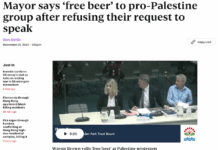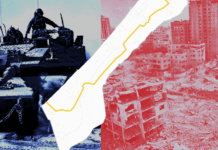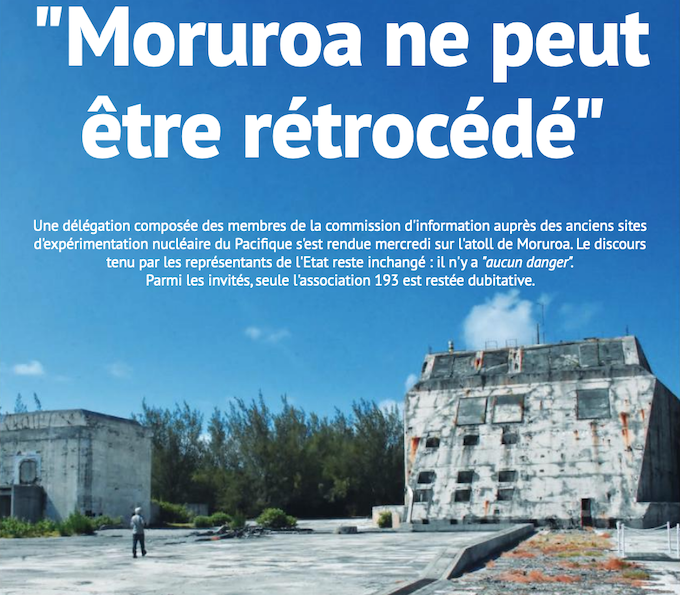
ANALYSIS: By Ena Manuireva
Following the publication of the book Toxic some 9 months ago and President Emmanuel Macron’s visit to French Polynesia last July, the response from the French administration has been to send French nuclear experts to Tahiti.
Their mission was to give clear and transparent answers about the state of former nuclear test sites among other topics. It was a way to counter the book’s anti-official version of the CEA’s (Centre d’Experimentation Atomique) claim of “clean and non-contaminating radioactivity” on both atolls.
The Commission of information created for those former sites of nuclear tests of the Pacific, was made up of 3 French civil servants involved in the controversial Paris roundtable — also called Reko Tika — organised by President Macron last July.
- READ MORE: The Moruroa Files – how cutting edge science, secret documents and journalism exposed a Pacific lie
- Thousands rally in Tahiti over nuke legacy
- France reassures Tahiti about nuclear legacy
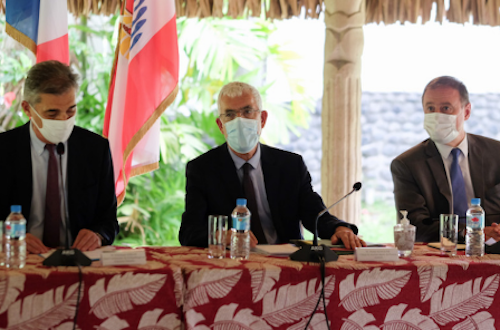
In a media conference, they talked about radiological and geo-mechanical surveillance of the Moruroa and Fangataufa atolls. They came with more scientific expertise and data that seemed to dispel the original idea of “clear and transparent answers”.
As far as the environment was concerned around those former nuclear sites, the conclusion was that the sites were much safer now after the presence of caesium-137 (a radioactive isotope of caesium formed as one of the more common products of nuclear fission) was noticed to be less year by year in all parts of the environment.
To “prove” their case of an independent and transparent study, they took samples of beef meat, whole milk or coconut juice from both atolls and are readily available to the population and analysed those samples.
Their results showed that the levels of radioactive concentration were far less than the “maximum levels admissible” — or whatever that means for the Ma’ohi who are not versed in the scientific jargon.
Artificial radioactive fallout level ‘low’
As for the health of the population, they reassured the people from the atolls that the level of toxicity of artificial radioactive fallout measured from 2019 to 2020 was extremely low, according to the data collected by the Institute of Radioprotection and Nuclear Safety (IRNS).
They established that the overall efficient dose (external exposition, internal exposition by ingestion and inhalation) of radioactivity was evaluated at 1,4 mSv (the measure of radiation exposure) in Mā’ohi Nui — which is two times lower than in France.
An even stronger reassurance was offered to the media when the question of a possible collapse of the northern part of the atoll of Moruroa was mentioned. The French experts replied that such a disastrous scenario was extremely unlikely, because the geo-mechanical system Telsite 2 put in place in 2000, would detect signs of unusual activities weeks beforehand.
Notwithstanding their initial answer, they added that even in the worst-case scenario, preventative measures would be taken to evacuate the population of Moruroa, and Tureia would not be hit by this improbable landslide.
A reassurance that clearly leaves doubt on whether Moruroa is at all safe.
When asked by one of the local journalists, Vaite Pambrun, why the atolls were not “retroceded” (ceded back) to their people now that it is “safe”, the delegate to Nuclear Safety M. Bugault was at pains to explain that it was not possible because plutonium was not buried deep enough under the coral layer, and for safety reasons the French state still needed to monitor the atolls.
A somehow contradictory response that does not surprise the people who are used to the rhetoric used by the French state for the last 50 years.
France seems to offer very reassuring measures and answers, but the populations have learnt in the past that the word of the French state must be taken with a lot of mistrust and scepticism especially when it comes to nuclear matters.
France trying to wipe out nuclear traces from Polynesian memory
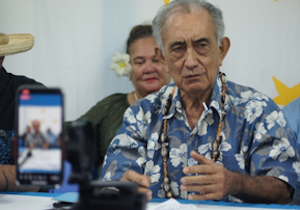
Independence leader Oscar Temaru, and former president of Tahiti, was quick to organise a press conference where he criticised the conclusions reached by the nuclear experts who seemed to contradict their findings about the safety of the atolls that still needed more monitoring, hence the refusal to retrocede.
After the last Paris roundtable, Temaru accused the French state and the local government — which he calls the local “collabos” (alluding to the French who collaborated with the Germans during the Second World War) to try “to wipe out the last evidence and vestiges that constitute the history of nuclear colonisation by the army and the money”.
According to Temaru, there is a trust crisis against the local government of territorial President Eduard Fritch and the French state that is going to last for a long time.
Those strong words also came after the decision was taken to completely destroy the last nuclear concrete shelter on the atoll of Tureia, wiping out for ever any traces of nuclear presence.
This decision is reminiscent of the one taken by the same French state to raze to the ground the two nuclear shelters used by the army on Mangareva.
By the same occasion, the hangar with the flimsy protection of corrugated iron used for the local population during the nuclear tests was also demolished. All those structures were pulled down in the early 2000s.
Father Auguste Ube Carlson, president of the anti-nuclear lobby Association 193, has also denounced the rhetoric used by the French state which “pretends’ to bring some new answers that have a “sound of deja-vu and that do not fool any of the populations who have suffered through the nuclear era”.
According to one of the Association 193 spokespeople, France is telling local populations that all is well in the best of worlds and there is nothing to worry about.
A more mitigated reaction
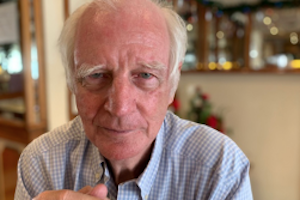
Local historian Jean-Marc Regnault conceded that it has been a struggle to get the French state to give access to files that at one point were declassified and then re-classified to now be reopened to the public which he considers a victory.
He does not share the same stance taken by Oscar Temaru regarding the wiping out of the last atomic shelter in Tureia. According to the historian, the shelter is a hazard to the population of Tureia as it contains asbestos and therefore needs to be destroyed.
Regnault positions himself as a researcher who, like any other member of the public, will be able to write the history of the nuclear era thanks to all those thousands of documents now available to be consulted, unless classified as state secrets.
He sees the history of a nation not in terms of buildings but in terms of what can be written and taught to the younger generations. The destruction of the building does not equal the wiping-out of a nation’s memory.
He finds it remarkable that teachers will have the material to teach the history of the atomic tests in Mā’ohi Nui, which was one the tenants of the Tavini party when they were at the helm of the country in 2004.
It is up to the women and men of Ma’ohi Nui to realise their dreams of writing the history of their islands by consulting those archives, especially the military ones and not be forced to only hear one narrative, that of the French state.
There is a movement toward more transparency, according to Regnault.
What about the conclusions drawn by the book Toxic?
The Delegate to Nuclear Safety M. Bugault, has been particularly dismissive of the book Toxic. He says that it is clear that the calculations based on the simulations are wrong and he rejected the deductions made by the book that the French state have played down the impacts of nuclear tests fallout on the Polynesians.
However, he admitted that 6 nuclear tests did not have favourable weather forecasts and generated radioactive fallout that led to doses “below the limit accepted by those working on the nuclear sites” but “higher than the doses accepted by the public”.
This is the reason why it is absolutely legitimate for people who have been contaminated to seek compensation.
He tells the press that the calculations and the investigation by Disclose wrongly contradict those made by the CEA in 2006 where the data and the mode of calculations were extremely technical and scientific and 450 pages long.
He suggested that those who were involved in the research and the publishing of Toxic were not versed enough in the technical jargon of the final document released by the CEA.
It is not enough to tell the truth but it must be accessible to the public, according to Bugault.
The book Toxic fails to explain in a clear and simple way how its calculations were carried out and achieved. He promised that in April 2022 the anti-Toxic book will be published by the CEA on Tahiti.
Ena Manuireva, born in Mangareva (Gambier islands) in Ma’ohi Nui (French Polynesia), is a language revitalisation researcher at Auckland University of Technology and is currently completing his doctorate on the Mangarevan language. He is also a campaigner for nuclear reparations justice from France over the 193 tests staged in Polynesia over three decades and a contributor to Asia Pacific Report.





























